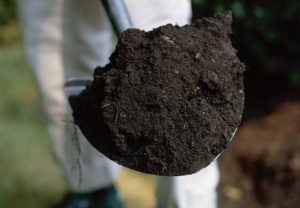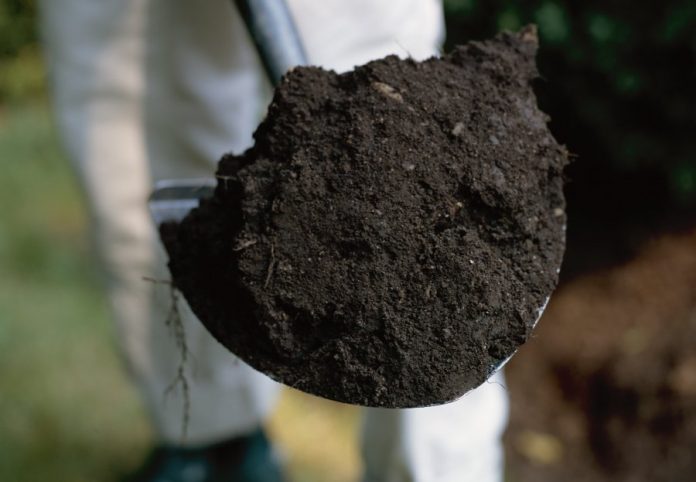 If the yard around your house is typical suburban land, its topsoil–if there is any– consists of 90-percent mineral material and 10-percent organic matter in various stages of decay.
If the yard around your house is typical suburban land, its topsoil–if there is any– consists of 90-percent mineral material and 10-percent organic matter in various stages of decay.
True topsoil is about six-inches deep, black in color and– here’s the caveat, in southern Denton County– the consistency of bread crumbs.
Most builders remove it to set house foundations on clay subsoils. That lost topsoil harbors microbes, bugs and worms that set up housekeeping, make room for air and water and use the shallow layer for a septic tank and graveyard. Plants love to wiggle their roots in this damp, tasty part of suburbia.
The soil animals’ job description is to burrow around, eat decaying organic matter, use the chemicals they need, excrete the leftovers, then donate their remains to Mother Nature’s topsoil factory.
Without soil critters, fruits and vegetables– not to mention other landscape plants– are spindly and yellowed. Never mind about great produce. If you’re guessing a gardener’s main job is to feed topsoil’s beasties, go to the head of the class!
The garden cycle is as follows– feed the animals that feed the plants that feed you, then start over again, which brings us to the topics of composts and fertilizers. Despite having similar functions in the garden there is a big difference between a bag of commercial fertilizer and a bag of compost.
That sack of plant food you buy contains fast-acting nitrogen, phosphorus and potassium, known by their chemistry aka’s as N, P and K. They accomplish one thing; and, that is to feed plant life until the cupboard is bare.
Commercial fertilizers are a short-term garden fix, but if you listen oh so carefully you’ll hear soil animals singing a song called: “What about us?” Some gardeners have mistaken the singers for fairies.
The big drawback to commercial fertilizers is that long-term they don’t replenish soil fertility or contribute to good structure, so it holds water and air. Beware of animals that live in poor soil. They’re a hungry army. Plants don’t stand a chance and you’ll find yourself thinking about pesticides; a second short-term fix.
If that’s not enough to keep you awake nights, commercial fertilizers contain salt, which accumulates after too many applications close together. A typical garbage bag’s worth of compost, on the other hand, brings “oohs” and “ahs” from animals, plants and people, so spread the stuff around in generous layers, add water and start churning out your own topsoil.
If you’re new to the garden game, organic matter is leaves, twigs, animal manures, grass-clippings, wood chips, bark, paper and kitchen vegetable waste. Bits of gravel now and then are okay.
Keep in mind the following limitations.
Flies love to lay eggs in oils and fats and that means maggots. I’m not saying flies and maggots don’t have their places in the ecosystem, but maybe not in a backyard. Fido’s fabulous nose can sniff out buried meat scraps and bones and he’s a natural digger. So, put those down the garbage disposal or out for the trash truck. Lastly, American gardeners don’t use carnivore manures, which contain toxins better left untouched.
You can add compost to a garden any time of the year, so don’t let cold days stop you from getting a little exercise. Pile on the raked leaves and grass, grab the spade and turn the stuff under or use it as a blanket of mulch. While breaking down, compost does slurp in soil nitrogen so there is no rule that says you can’t add some commercial fertilizer to the mix for good measure, just don’t go overboard.
For you lawn-lovers out there, golf courses do a nifty trick with truckloads of compost and call it “top dressing.” They spread the organic matter right on top of the grass, water it in and, in no-time-flat the lawn grows over it, while decomposition happens below the green surface.















